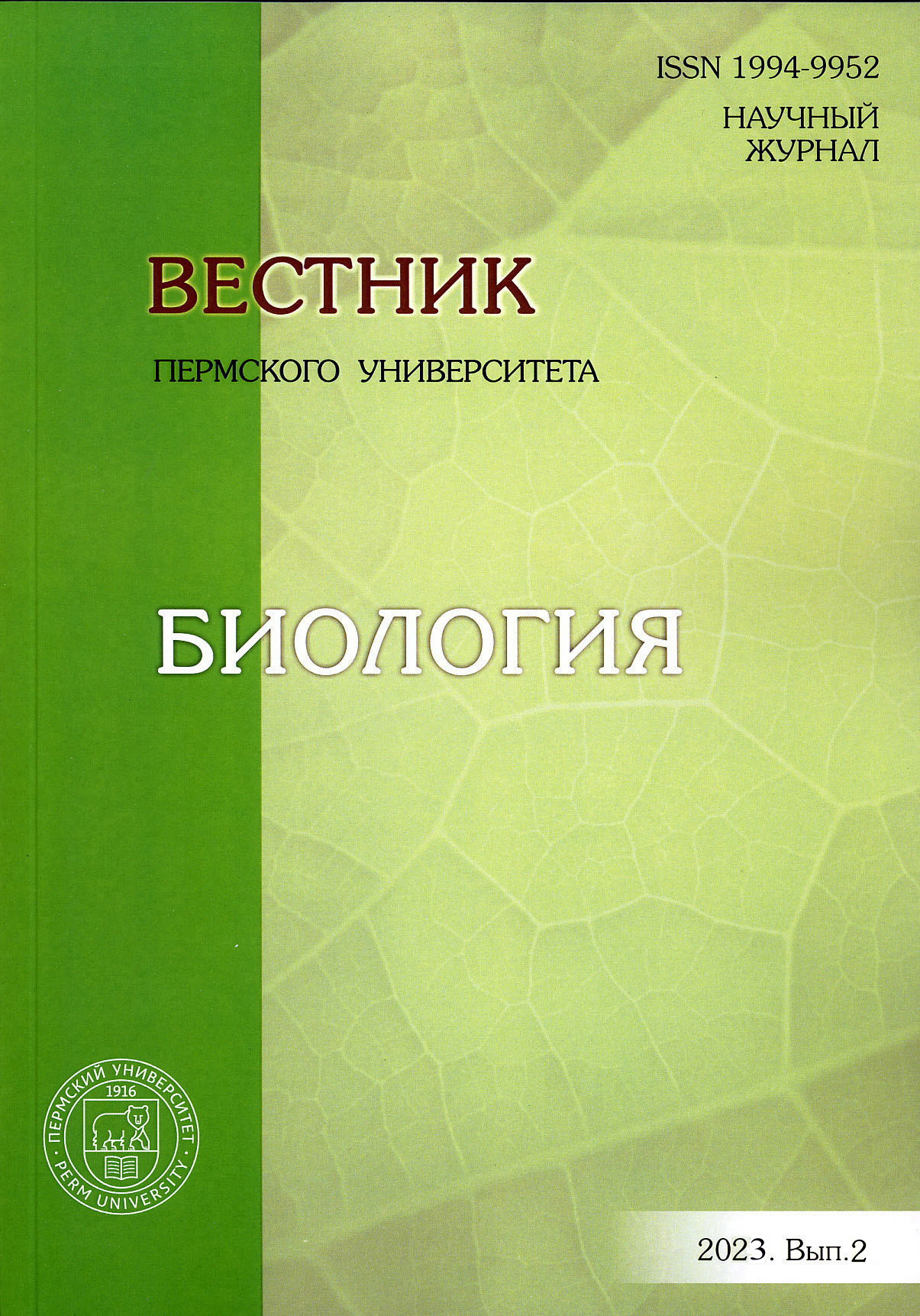Таксономический анализ макрофитобентоса акватории памятника природы «Прибрежный аквальный комплекс у мыса Фиолент» (Черное море)
##plugins.themes.bootstrap3.article.main##
Аннотация
##plugins.themes.bootstrap3.article.details##
Лицензионный договор на право использования научного произведения в научных журналах, учредителем которых является Пермский государственный национальный исследовательский университет
Текст Договора размещен на сайте Пермского государственного национального исследовательского университета http://www.psu.ru/, а также его можно получить по электронной почте в «Отделе научных периодических и продолжающихся изданий ПГНИУ»: YakshnaN@psu.ru или в редакциях научных журналов ПГНИУ.
Библиографические ссылки
Василевич В.И. Очерки теоретической фитоценологии. Л.: Наука, 1983. 248 с.
Грейг-Смит П. Количественная экология растений. М.: Мир, 1967. 359 с.
Грузинов В.М. и др. Источники загрязнения прибрежных вод Севастопольского района // Океано-логия. 2019. Т. 59, № 4. С. 579–590. https://doi.org/10.31857/S0030-1574594579-590
Дажо Р. Основы экологии. М.: Прогресс, 1975. 245 с.
Долотов В.В., Иванов В.А. Повышение рекреационного потенциала Украины: кадастровая оценка пляжей Крыма. Севастополь: ЭКОСИ-Гидрофизика, 2007. 193 с.
Дьяков Н.Н. и др. Гидролого-гидрохимические характеристики прибрежных вод Крыма и необходимые мероприятия по снижению уровня загрязнения рекреационных зон // Труды ГОИН. 2020. № 221. С. 163–194.
Жукова А.А., Минец М.Л. Биометрия. Описательная статистика: учеб. пособие. Минск, 2019. 100 с.
Зайцев Г.Н. Математика в экспериментальной ботанике. М.: Наука, 1990. 296 с.
Зинова А.Д. Определитель зеленых, бурых и красных водорослей южных морей СССР. М.; Л.: Наука, 1967. 397 с.
Игнатов E.И, Орлова М.С., Санин А.Ю. Береговые морфосистемы Крыма. Севастополь: ЭКОСИ-Гидрофизика, 2014. 267 с.
Калугина А.А. Исследование донной растительности Черного моря с применением легководолаз-ной техники // Морские подводные исследования. М.: Наука, 1969. С. 105–113.
Калугина-Гутник А.А. Фитобентос Черного моря. Киев: Наук. думка, 1975. 248 с.
Красная книга города Севастополя. Главное управление природных ресурсов и экологии города Севастополя. Калининград; Севастополь: РОСТ-ДОАФК, 2018. 432 с.
Красная книга Республики Крым. Растения, водоросли и грибы / под. ред. А.В. Ена, Д.А. Фатеры-га. Симферополь: Ариал, 2015. 480 с.
Красная книга Российской Федерации (растения и грибы). М.: Товарищество научных изданий КМК, 2008. 885 с.
Мильчакова Н.А. Макрофитобентос // Современное состояние биоразнообразия прибрежных вод Крыма (черноморский сектор). Севастополь: ЭКОСИ-Гидрофизика, 2003. С. 152–208.
Миркин Б.М., Розенберг Г.С., Наумова Л.Г. Словарь понятий и терминов современной фитоценологии. М.: Наука, 1989. 223 с.
Особо охраняемые природные территории Севастополя. Симферополь: Ариал, 2020. 140 с.
Панкеева Т.В., Миронова Н.В. Ландшафтная структура береговой зоны памятника природы «Прибрежный аквальный комплекс у мыса Сарыч» // Труды Карадагской научной станции им. Т.И. Вя-земского – природного заповедника РАН. 2022. Т. 7, № 1 (21). С. 51–60.
Позаченюк Е.А. и др. Состояние особо охраняемых природных территорий города федерального значения Севастополя // Геополитика и экогеодинамика регионов. 2020. Т. 6 (16), вып. 2. С. 161–171.
Работнов Т.А. Фитоценология. М.: Изд-во МГУ, 1983. 384 с.
Савинов А.Б., Никитин Ю.Д. Развитие представлений об активности растений, ее экологической роли и способах оценки в экосистемах // Принципы экологии. 2017. № 3. С. 20–39.
Червона книга України. Рослинний світ. Київ: Глобалконсалтінг, 2009. 912 с.
Birben Ü. The effectiveness of Protected Areas in Biodiversity Conservation: The Case of Turkey. // CERNE. 2019. Vol. 25, № 4. P. 424–438.
Black Sea Red Data List. 1997. URL: http://www.grid.unep.ch/bsein/redbook/index.htm.
Black Sea Red Data Book / ed. H.J. Dumont. New York: United Nations Office for Project Services, 1999. 413 p.
Buonocore E. et al. Trends and Evolution in the Concept of Marine Ecosystem Services: An Overview // Water. 2021. 13(15). 2060 p. https://doi.org/10.3390/w1315206
Coad L. et al. Widespread shortfalls in protected area resourcing undermine efforts to conserve biodiver-sity // Frontiers in Ecology and the Environment. 2019. Vol. 17(5), iss. 5. P. 259–264. https://doi.org/10.1002/fee.2042
Cheney D.T. R + C/P anew and improved ratio for comparing seeweed floros // Journal Phycology. 1977. Vol. 13, № 2 (Suppl.). 12 p.
Feldmann J. Recherches sur la végétation marine de la Méditerranée. La côte d’Albères // Revue Algolo-gy. 1937. Vol. 10. P. 1–339.
Fernández C.G. et al. Limited differences in fish and benthic communities and possible cascading effects inside and outside a protected marine area in Sagres (SW Portugal) // Journal Marine Environmental Research. 2016. Vol. 114. P. 12–23. https://doi.org/10.1016/ j.marenvres.2015.12.003
Guiry M.D., Guiry G.M. AlgaeBase. URL: http: // www.algaebase.org. [дата обращения: 20.02 2023].
Luypaert T. et al. Status of Marine Biodiversity in the Anthropocene // S. Jungblut, V. Liebich, M. Bode-Dalby (Eds.). YOUMARES 9 - The Oceans: Our Research, Our Future: Proceedings of the 2018 conference for Young Marine Researcher in Oldenburg, Germany, Springer Nature Switzerland AG, 2020. P. 57–82. https://doi.org/10.1007/978-3-030-20389-4
Öztürk B. et al. Prospects for Marine Protected Areas in the Turkish Black Sea // Management of Marine Protected Areas. 2017. P. 247–262. DOI: 10.1002/9781119075806.ch13
Strong J.A. et al. Marine biodiversity and ecosystem function relationships: The potential for practical monitoring applications // Estuarine, Coastal and Shelf Science. 2015. Vol. 161. P. 46–64.




